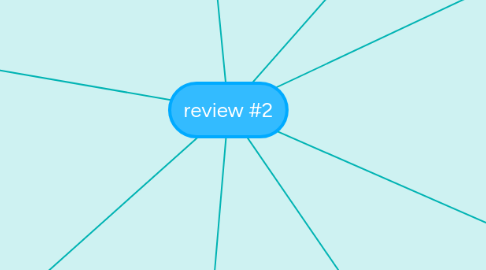
1. memory systems
1.1. encoding
1.1.1. attention enhances
1.1.2. divided attention undermines
1.1.3. levels of processing theory
1.1.3.1. deeper levels of processing result in more durable memory codes
1.1.4. elaboration- links
1.1.5. dual coding theory
1.1.5.1. visual imaging = two memories than one
1.2. storage
1.2.1. three memory store
1.2.1.1. sensory memory
1.2.1.2. short term mem
1.2.1.3. LTM
1.2.2. Atkinson and Shiffrin- incoming mem passes through two temp storage buffers before being placed in LTM
1.3. retrieval
1.4. retrieval
1.4.1. partial info
1.4.2. misinformationeffect
1.4.3. source monitoring
1.5. forgetting
1.5.1. ebbinghaus
1.5.2. recall, recognition, relearning
2. mnemonics
2.1. ways to remember
2.2. ways to remember
2.3. interesting
2.4. rehearsal
2.5. rhymes / songsc
2.6. chunking
2.7. journey/ order
2.8. journey/ order
2.9. acronyms
2.10. objects
3. cognition
3.1. mental action
3.2. aristotles law of association
3.3. gestalt theory
3.3.1. whole is greater than the sum of its parts
3.4. information processing
3.5. constructivism
3.6. constructivism
3.7. contextual theories
3.8. edward tillman
3.9. hippocampus
3.10. hippocampus
3.11. cognitive maps
4. intelligence
4.1. tests
4.1.1. mental ability i
4.1.2. ntwlligence
4.1.3. ntwlligence
4.1.4. aptitude
4.1.5. achievement
4.1.6. personality
4.2. standardization
4.3. standardization
4.4. validity
4.5. alfred binet
4.6. sir francis galton
4.7. 4 types of intelligence
4.8. 4 types of intelligence
4.8.1. verbal
4.8.2. practical
4.8.3. social
5. classical conditioning
5.1. ivan pavlov : pavlovs dog experiment
5.2. neutral stimulus paired with unconditioned stimulus ~ unconditioned response
5.3. NS becomes CS that elicits CR
5.4. acquisition , extinction, generalization, discrimination
6. operant conditioning
6.1. BF Skinner
6.2. response - press lever, stimulus presented or removed -food or shock
6.3. in stimulus situation, response of followed by :
6.3.1. 1)reinforcement
6.3.2. 2) punishment
7. problem solving
7.1. problem state, initial state, goal state
7.2. EL thorndike
7.2.1. founded connectionism
7.2.2. first animal lab studies
7.2.3. multifactor theory of intelligence
7.2.4. changed trained mind to transferable skills
7.3. puzzle boxes
7.4. effect, excercize, readiness
7.5. algorithms/ heuristics
8. drugs
8.1. stimulants
8.1.1. “uppers”
8.1.2. “uppers”
8.1.3. xanthine (caffeine)
8.1.4. nicotine
8.1.5. amphetamines
8.1.6. amphetamines
8.2. depressants
8.2.1. alcohol
8.2.2. opioids
8.3. hallucinogens
8.4. hallucinogens
8.4.1. psychedelics
8.4.2. dissociatives
8.4.3. deliriants

